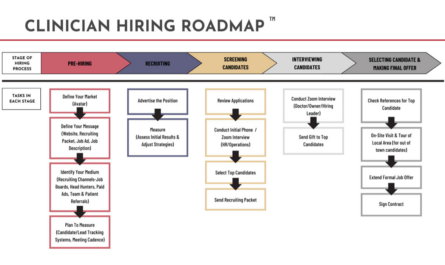By Kristine Berry, RDH, MSEC
Practical and tactical solutions for working remotely
 We are living in a world of rapid digitization and disruption. Two decades ago, each dental practice was largely constrained to one geographic location. Each practice was also mostly relegated to one office and was running operations in a face-to-face context. Technology has made the world a smaller place, yet most dental organizations are still facilitating conversations, learning and team development events using old methodology. This article highlights communication channels and effectiveness, as well as six foundational components designed to create engaging and effective virtual conversations.
We are living in a world of rapid digitization and disruption. Two decades ago, each dental practice was largely constrained to one geographic location. Each practice was also mostly relegated to one office and was running operations in a face-to-face context. Technology has made the world a smaller place, yet most dental organizations are still facilitating conversations, learning and team development events using old methodology. This article highlights communication channels and effectiveness, as well as six foundational components designed to create engaging and effective virtual conversations.
Learning and leadership
Professionals of all stripes work virtually and remotely – from regional and district leaders within a dental service organization to dentist-owned multi-location dental practices, sales professionals and practice management consultants. Given that there is such a wide definition of what it means to work virtually and remotely, you are encouraged to approach this article through the lens of what makes sense for you (regardless of whether you are a team leader, regional manager, CEO, CFO, entrepreneur, internal coach or trainer, sales professional or part of an interdisciplinary healthcare team), as well as your groups or teams.
Two areas that are rapidly changing are learning and leadership. Virtual and remote teams can be defined as global, or as spanning a big urban center, state or region. A lot of organizations must look at how they do virtual, including how they can boost the virtual team’s effectiveness, engagement and/or presence and the organization’s bottom line. This leads to new challenges, such as the Zoom call, where employees and leaders find themselves dialing from one call to another, often being talked at rather than conversed with. Many see this as a chance to multitask, placing one meeting on mute while catching up on the to-dos assigned from another, as overwhelmed team members juggle a load of competing priorities that all need to be done immediately, across multi-locations and regions.
Gallup has found that in most North American workplaces, employee engagement numbers haven’t changed much since 2000; today, only around one-third of employees are engaged. Consider that 11 billion meetings take place every day, with a third of them noted to be ineffective, and $37 billion is wasted every year on ineffective meetings. This leads to new challenges and principles for creating engaging and effective virtual meetings. As more organizations and professionals start to operate in the remote and virtual domain, it is vital to develop skills and confidence that help build connections with remote team members, facilitate meetings and help transition most activities to the virtual realm.
Engaging conversations in virtual meetings – defined as impactful, intersecting, interactive, important and meaningful – invite the participant to be present and participate in dialogue, shape discussions and move the initiatives and topics forward. Effective suggests relevant, practical, implementable, accountable and sustainable results, which often are missing from virtual exchanges. As someone who has worked remotely since 2004, it’s been amazing in the last 16 years to see how quickly things have changed.
Communication in the remote ecosystem
Understanding effective communication in the remote space is vital. Why?
The answer is found in a quote by Kim Krizan from the movie Waking Life:
“Language comes from our desire to move beyond our isolation and have some sort of connection with one another. Words by themselves are lifeless, they’re inert. They’re nothing more than symbols. So much of our experience is intangible; so much of what we perceive cannot be adequately expressed. And because of that, when we communicate with one another, and we feel we’ve connected, that we’re understood – it’s almost like having a spiritual communion with that person.”
We all want to connect with one another. When we connect, we feel a special affinity with the person who we believe really understands us. Communication is how our message is delivered and how it is received. It is two-way, involving both the sender and the receiver. The ecosystem of virtual conversations includes:
- Phone and/or text.
- E-learning; synchronous or asynchronous training.
- Visual education events that are instructor/facilitator led through webinars, e-leaning and webcasts, teleseminars.
- Video-based calls/learning.
- Virtual meetings (formal and informal).
- Goal-setting via strategic planning sessions and virtual retreats.
- Mentored conversations. Experienced professionals can be partnered with those with less experience.
- Group or team coaching focused on implementation, awareness, goal setting and ongoing responsibility and accountability for sustainable results.
- Virtual team development, from virtual team meetings to virtual retreats and team coaching.
- Peer-to peer learning with masterminds and breakouts.
What virtual teams and leaders need to consider is that effective communication involves not only words, but their body language, the voice they use and their ability to really listen.
Research shows that:
- The words we use contribute 7% to the effectiveness of our message.
- The quality and tone of our voice make up 38% of the message we send.
- Body posture, facial expressions and gestures contribute to 55% of the message we send.
Our beliefs are conveyed more clearly through our body posture, facial expressions and gestures than our words. As a result, context and emotions are frequently missing or misinterpreted, depending on the mode. During phone-based conversations, we lose the visual signals and consciously or unconsciously focus on the words and the pitch of voice we hear (especially when we multi-task). When talking on the phone, our tone plays a key role, as well as how quickly we speak.
Many of us overlook this in our daily conversations. Yet, this is where we, as listeners, turn to get our cues. Many of us live in a never-ending email, text world or application, such as WhatsApp. In 2015, WhatsApp surpassed the number of texts per day: 30 billion texts from 750 million users. It is estimated that in a single day, the average North American sends five times more texts than the number of phone calls they make. When using these modes, we often lose context and miss cues that define the sender’s meaning and intent. This naturally creates challenges. Hint: Face to face conversations or video chats are recommended when an emotionally charged message (positive and negative) needs to be delivered.
Communication is a foundational skill in personal and professional domains. Asking the following questions can help you evaluate your current communication style and improve discussions with your remote team:
- How developed is your team’s communication skills?
- What areas need attention?
- What can you accomplish through effective communication?
- What formal and informal communication channels exist?
- What different types of modalities do you use or consider using?
Subhead: Five virtual team basics
Supporting the remote team member or team begins with defining what overall success and wellbeing looks like for remote workers, and ensuring they feel supported within the organization. Yet, how do we become successful given the reality of distance, culture and time zones?
Following are five basic skill sets virtual teams need to ensure sustainable, engaging and effective virtual conversations:
- Create the context and culture.
- Build trust and create safety; build relationships or connections.
- Recognize opportunities for development and In a virtual world, we need to cultivate core skills to create context, communication, process, emotional intelligence, tools, group development and troubleshooting skills – not just tactical abilities.
- Set people up for success.
- Focus on process and co-create expectations. Develop a clear understanding of what is expected in regard to work (i.e., hours, approaches, breaks, how to log on and share work, etc.).
- Determine how you do things at your organization.
- Develop clear reporting relationships, roles and responsibilities. Who do team members report to, and on what issues?
- Determine when reporting is required.
- Determine whether you have clarity, agreements and by/whens.
- Micro-moments.
- Focus on micro-monitoring vs. micro-managing.
- Be aware of your priorities.
- Determine what is and is not
- Know what support and resources are required to achieve the intended results.
- Community vs. island.
- Whether we work alone or as part of a team, it takes a community to be successful in the remote space.
- How do you support trust, create psychological safety, and connect with a team or across the organization?
- How do team members see each other and connect with one another? (This may include regular virtual lunches, where the team connects for a meal from each of their locations; daily virtual huddles at a time that is convenient for all zones; and/or face-to-face time, either every quarter or more regularly.)
- Clarity on how to flag issues. Be aware of:
- The issues to raise and when to raise them.
- Who team members should flag issues to.
- When team leaders are available and how can team members can reach them.
- Available means to facilitate confidential conversations to make important decisions.
Change and disruption are a constant. Understanding virtual and remote work requires a different set of skills for different types of remote leaders and teams. This article has reviewed the basics in communication and the distinctions in a remote ecosystem, as well as five virtual team elements that provide a self-assessment for virtual and remote needs. It presents questions to support one’s call-to-actions for creating environments that engage impactful, interactive and meaningful virtual conversations. I encourage you to share this article with your colleagues, or with someone in your network, so that you can implement a new methodology in your virtual and remote workspace.
Kristine Berry is an international speaker and performance coach specializing in the areas of group coaching and team development, enhancing group practices. Looking for a speaker or coach? She invites you to contact her via email at [email protected] or visit her website www.kristineberry.com.
Bibliography:
Britton, Jennifer, (2017) Effective Virtual Conversations. Potential Realized Media.
Https://www.potentialsrealized.com/teams-365-blog/teams365-897-teamwork-foundations-communication. Accessed January 2020.
Https://www.potentialsrealized.com/teams-365-blog/category/virtual-facilitation. Accessed January 2020.





